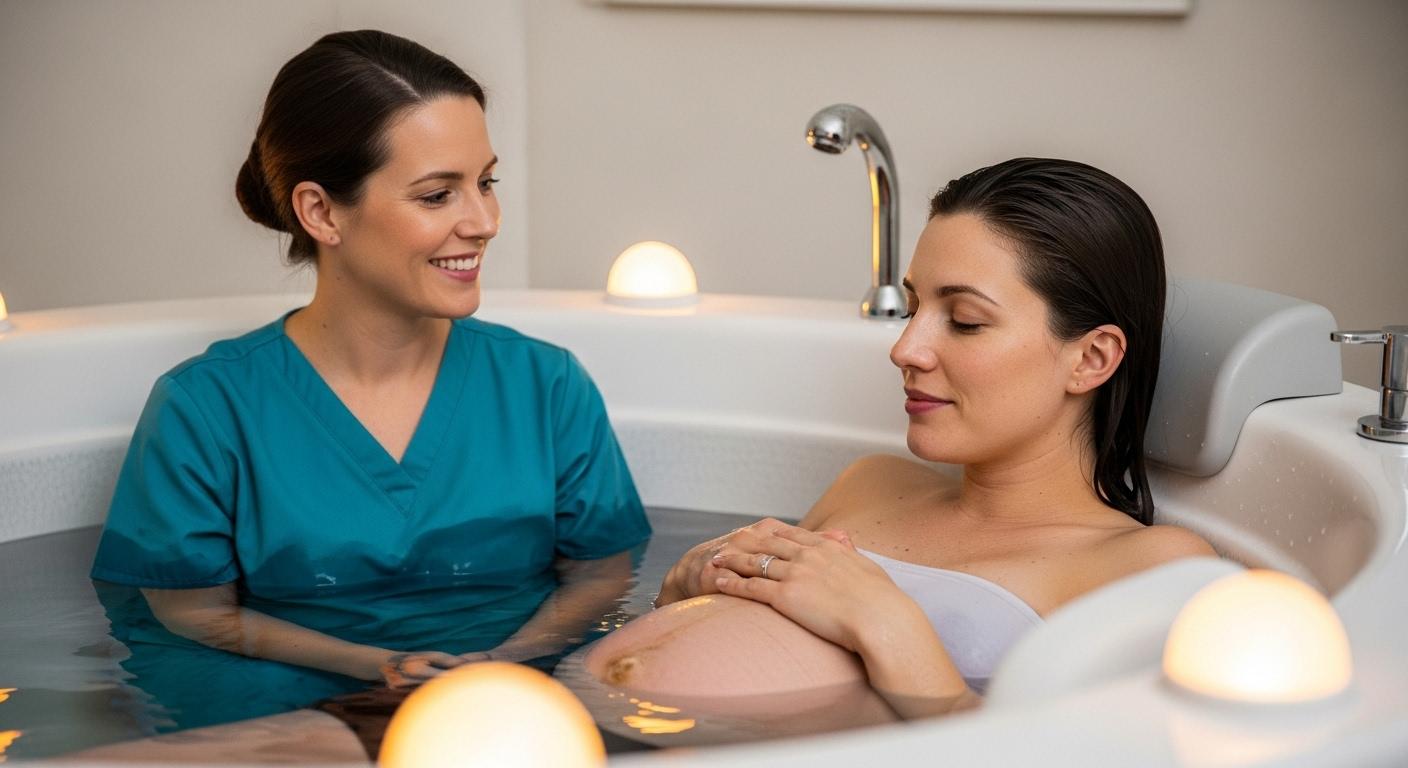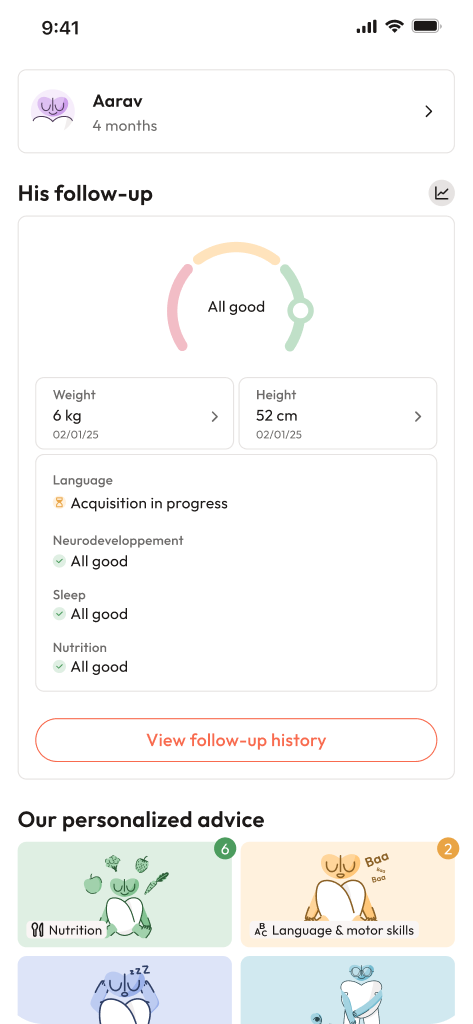Warm water, gentle movements, an enveloping sense of calm—many parents imagine the possibility of water birth as both enchanting and reassuring, yet questions swirl: Is it genuinely safe for the baby? Who is considered eligible? Is the pain really less intense? And what about infection or the practical logistics at your chosen hospital or at home? If the idea of spending labour, or even the birth itself, in clear, temperature-regulated water appeals to you, there is much to consider beyond dreams of comfort. From the strong evidence supporting pain reduction to the nuanced instructions surrounding infection control, water birth is an option that blends tradition, modern medicine, and the power of informed choice. Let’s explore together: eligibility criteria, benefits and risks—rare but real—medical protocols and science, preparation steps, and how to craft your perfect plan (plus a reliable Plan B, of course).
What is water birth: definition, history, and how it fits today
Water birth is the process in which a mother spends labour—and sometimes the birth itself—in a specially designed pool of warm water. But not all water birth is equal. There are subtle distinctions:
- Water labour: The mother remains in water for the first stage (contractions and cervical dilatation), stepping out for the actual delivery.
- Water birth (strict sense): Both labour and the birth of the baby occur in water, with the newborn emerging beneath the surface before being brought up for their first breath.
The allure of water as a medium for childbirth has grown alongside advances in physiological birth practices. Hospitals, birthing centres, and home birth teams have increasingly adopted the idea, although actual practices diverge based on available equipment, policies, and above all—staff training.
Water birth settings: hospital, birthing centre, home
Picture three scenes: a hospital room with a fixed, disinfected tub surrounded by staff equipped with rapid transfer plans; a quiet birth centre designed for privacy and hydrotherapy comfort; a living room prepared with an inflatable pool, towels lined up and a backup route clear, just in case. Each environment offers a unique blend:
- Hospitals: Access to immediate surgical intervention and highly trained teams is a firm reassurance. Integrated pools or portable rigid tubs are maintained with strict hygiene logs, disposable liners, robust water quality checks, and regular staff simulation training.
- Birth centres: Often designed for hydrotherapy with more flexible and homely atmospheres, centres frequently prioritise continuity of care. Protocols around transfer times and monitoring are paramount; not all facilities support full water birth.
- Home: Portable or inflatable birth pools are the mainstay—affordable, flexible, but demanding in terms of set-up, floor strength (a filled pool is heavy), drainage, and stringent cleanliness.
Ultimately, water birth is generally an option reserved for carefully selected, low-risk pregnancies, and each location requires rigorous preparation and communication. Fast access to advanced care, privacy, and the comfort of familiar surroundings—these are all tradeoffs parents must weigh.
Who is eligible for water birth? Indications and exclusions
Selection is decisive. You might wonder: “Is water birth right for me, or is it unsuitable in my case?” Here’s how teams decide:
Good candidates
- Single fetus (not twins/triplets), head-down position, at or beyond 37 weeks.
- No placenta previa, no active maternal infection, and normal blood pressure.
- No requirement for constant, intensive monitoring—only brief checks needed.
- Healthy, low-risk pregnancy with steady fetal growth and stable vitals.
Situations where water birth is avoided
Some situations prompt a clear “No” from the medical team:
- Multiple pregnancy (twins, triplets, etc.), breech or transverse presentations, prematurity, heavy unexplained bleeding, active infection, or complicated previous births.
- Compromised maternal health: uncontrolled hypertension or diabetes, severe preeclampsia, or circumstances needing continuous monitoring.
- Placental issues or known fetal complications needing direct intervention.
Assessment is always individual. What suits one might not for another—even from labour’s start to the moment of birth.
Benefits for mother and baby: Science and experience
The promise of water birth extends beyond mere comfort—though, for many, that alone is considerable. Here’s what science (and countless parents) observe:
Maternal comfort, mobility, and emotional well-being
Buoyancy relieves pelvic and joint strain, freeing the mother to shift position—kneeling, squatting, even floating—all while reducing the pressure on her back and hips. Less gravity means more flexibility; muscles and the perineum are gently warmed. What follows is often a reduced perception of pain, lower stress, and—according to most mothers—a greater sense of self-agency.
Not all pain dissolves. Water is not a pharmaceutical anesthetic, but it is a strong, non-drug alternative for those wishing to minimise medicinal analgesia.
Impact on labour and the perineum
Some systematic reviews highlight a shorter first stage of labour (contractions and dilatation), less reliance on epidurals, and potentially fewer episiotomies or severe tears. Why? The combination of warmth, gradual crowning and gentler pushing helps tissues adapt. Still, no method is foolproof; individual variation exists.
Well-being of the newborn
Meticulous monitoring and strict infection control keep early outcomes, such as Apgar scores, in line with those of land births in low-risk cases. The first moments are often peaceful—skin-to-skin contact commences right in the tub, and delayed cord clamping is practised when possible. Rare complications are noted, but they are not the norm when all checks are respected.
Risks and complications: Separating worry from evidence
No birth is entirely without risk. Water birth has its own list of concerns—sometimes debated, always taken seriously.
For the mother
- Infection: Curtailing this risk involves new disposable liners or scrupulous tub disinfection, documented water checks, and aseptic procedures by all staff.
- Overheating or faintness: Temperatures above 38°C (100.4°F) are discouraged. Robust, visible thermometers and regular checks keep things within the recommended range.
- Bleeding is managed according to obstetric protocols—most teams transition to land quickly if abnormal bleeding occurs.
For the newborn
- Water aspiration (baby accidentally inhales water on delivery): Unlikely with well-trained staff and clear protocols.
- Respiratory distress, infection, or umbilical cord complications (like cord avulsion): Uncommon, but immediate response is necessary if warning signs like poor tone or blue colour appear.
What does the evidence say?
Large-scale reviews like the Cochrane review suggest reliable benefits for pain and maternal satisfaction during hydrotherapy, though neonatal outcomes show little clear difference versus land birth in well-screened cases. Professional bodies such as NICE and ACOG support the use of water for labour pain relief but recommend caution regarding underwater delivery, especially the second stage. The conclusion? Benefits for maternal comfort are consistent; neonatal benefits are not obvious, but strict adherence to protocols is non-negotiable.
Key safety protocols: Water, monitoring, and readiness
- Temperature: Keep the water close to body temperature, typically between 34–37°C (93–98.6°F), never exceeding 38°C (100.4°F).
- Hygiene: Disposable liners or full disinfection after each use are standard. All pool fills, cleanings, and inspections are logged.
- Monitoring: Intermittent auscultation (using a waterproof doppler) is the default for low-risk cases, with more advanced monitoring if complications arise.
- Exit criteria: If fetal heart tones are not reassuring, maternal fever develops, heavy bleeding occurs, or equipment becomes unreliable, it’s time to move to land—without hesitation.
The physiology of water for childbirth: Why does it help?
Why does water sometimes make such a difference? Imagine buoyancy supporting your every movement, the pelvis loosening, fatigue melting. Endorphin release increases, cortisol drops, and the overall pain threshold is naturally elevated. Warm water also helps maintain steady thermoregulation for mother and baby, preventing chills and excessive sweating.
Planning for water birth: What parents can do now
Early conversations and planning
Don’t wait until labour day. Consult your doctor or midwife about your interest in water birth during your third trimester—if not before. Ask these practical questions:
- Is a clean birthing pool available, and is staff trained for water birth or hydrotherapy management?
- How is water temperature managed and monitored?
- What equipment is used for waterproof fetal monitoring?
- What signs prompt a transition out of the pool?
- Is an anaesthetist available rapidly if an epidural is later needed?
- Where would neonatal resuscitation occur if required?
Write your birth plan, including your preference for water, your limits, pain-management wishes, skin-to-skin intentions, and your Plan B for swift transfer.
Physical and mental exercises
Gentle pelvic floor work, coordinated breathing, and exercises that encourage mobility (even water-based prenatal classes) strengthen mother’s confidence and physical readiness. Mental preparation—visualising the steps of entering, moving, and, if needed, exiting the pool—can significantly reduce stress.
Birthing pools and home logistics
- A sturdy, well-designed tub (fixed in hospitals, deep dedicated pools in centres, inflatable for home) is essential.
- Accessories, such as handles, mats, towels, and visible thermometers, offer both safety and comfort.
- If planning at home, evaluate floor load (water is heavy!), arrange uninterrupted walkways, and ensure rapid, safe filling and draining.
Labour in water: Practical management
- Low-risk mothers typically undergo intermittent monitoring, switching to advanced tracing if needed.
- Position shifts—kneeling, floating, squatting—help with descent and comfort.
- Move slowly: Notify your care provider before any major position changes in water for stability and safety.
Pain management and other options
- Hydrotherapy stands out as a primary non-pharmacological relief technique.
- Need an epidural? Plan to exit the pool, as insertion and monitoring cannot be conducted safely in water.
- In some locations, nitrous oxide or opioids are available as alternative analgesia, typically out of the pool.
Protecting the perineum and newborn care
- Gentle crowning, warm compresses, and hands-on or “hands-poised” techniques reduce tearing risk.
- Once the baby’s head surfaces, airway clearance happens promptly; routine suction is unnecessary unless the situation indicates it.
- Immediate skin-to-skin contact and neonatal assessment come next. If anything seems amiss, rapid transfer to land for resuscitation follows.
Special scenarios, induction, and emergency preparation
- Some medical scenarios, such as VBAC, twins, breech, or comorbidities, usually exclude water birth—though hydrotherapy for labour may be possible under close supervision and special protocols.
- Induced or augmented labours typically require strict monitoring, potentially limiting water time.
Emergencies? All teams must rehearse exit and transfer steps before birth. Neonatal equipment must remain on standby.
Myth-busting: Sorting facts from fiction
- “Babies breathe underwater!” Not quite. The first breath is triggered only after surfacing; trained staff ensure a smooth transition.
- “Water guarantees no tears.” Warm water may help soften tissue, but no method is foolproof.
- “Infection is inevitable.” With rigorous cleaning and disinfection protocols, infection remains rare.
Practical checklists for parents
Before birth
- Confirm medical eligibility.
- Document your water birth plan and Plan B.
- Verify tub, monitoring, hygiene, and transfer logistics.
- Ensure all emergency and neonatal equipment is ready.
- Know the staff available for your birth.
Admission
- Ensure head-down, term baby.
- Rule out fever or bleeding.
- Check water temperature and hygiene.
- Confirm neonatal support is ready.
During labour
- Apply correct fetal monitoring delays/protocols.
- Record time in/out of the pool and fill/disposal of water.
- Continue to monitor maternal vitals, temperature, blood pressure, and pulse.
- Be clear on when to exit the pool.
After delivery
- Assess and repair perineum if necessary.
- Perform immediate newborn assessment (Apgar scores).
- Clean and disinfect tub thoroughly.
- Review postnatal instructions and arrange for follow up.
Postnatal care and recovery
Skin-to-skin bonding continues as baby stabilises, with dedicated support for early feeding. The placenta is checked, perineal assessment concludes, and stitches applied if needed. Should pelvic floor symptoms (pain, incontinence, heaviness) persist, don’t hesitate—arrange for dedicated pelvic floor rehabilitation.
Key takeaways
- Water birth, when conducted with adherence to infection control and clear eligibility guidelines, can be a safe, satisfying option for low-risk pregnancies, delivering unique advantages in comfort, pain relief, and birth experience.
- Safety rests on candidacy selection, well-trained staff, robust protocols, hygiene, real-time monitoring, temperature regulation, and a well-rehearsed plan for quick transfer.
- Professional bodies such as Cochrane, NICE, and ACOG underscore immense comfort benefits during labour; second-stage underwater delivery requires further research and individual risk screening.
- Education, preparation, and open dialogue with your care provider are your strongest assets.
- Explore resources such as the Heloa application, for detailed, personalised advice and free paediatric health questionnaires.
Questions Parents Ask
How much does a water birth cost and is it covered by insurance?
Cost can range significantly depending on your setting—hospital, birth centre, or home. Some hospitals include water birth as part of their routine maternity care, but if you opt for a private or home setup, expect potential fees for pool rental, additional supplies, or extra midwifery hours. Insurance coverage varies—certain policies might reimburse the basic delivery but leave out supplementary costs for pools or specific devices. Asking the hospital for a written breakdown and cross-verifying with your insurance company is often the fastest way to clarify. Unsure which services are covered? A quick phone call usually resolves the confusion.
Is water birth safe for first-time parents (first pregnancy)?
First pregnancy is not a barrier if your situation is “low-risk”. Many first-time mothers find water birth especially helpful for pain relief, and early studies indicate no increase in complications compared with land births under strict medical supervision. Still, first labours tend to be longer, and some teams recommend using the pool for comfort but moving to land for the pushing phase if progress stalls. Discuss preferences, clarify all concerns, secure an agreement around exit criteria, and keep open communication going with your care team.
How do I find a provider or facility that offers water birth near me, and what should I ask them?
Start by reviewing websites of hospitals or birthing centres, and directly contacting maternity wards or local midwives. Peer recommendations—parent support groups, midwife forums—are valuable too. When reaching out, focus on clarity:
- Their water birth policy, eligibility criteria
- Pool cleaning, water temperature protocols
- Equipment for waterproof monitoring, and when you’d be asked to exit the tub
- Staff experience and emergency preparedness
- Cost transparency for every component
If possible, arrange a tour: seeing the space can bring reassurance and highlight new questions. Any reputable team should welcome your curiosity and strive to reassure you.
Ready to plan or still curious? Use every question above to build the confidence and comfort that you and your baby truly deserve, on your terms.

Further reading :









